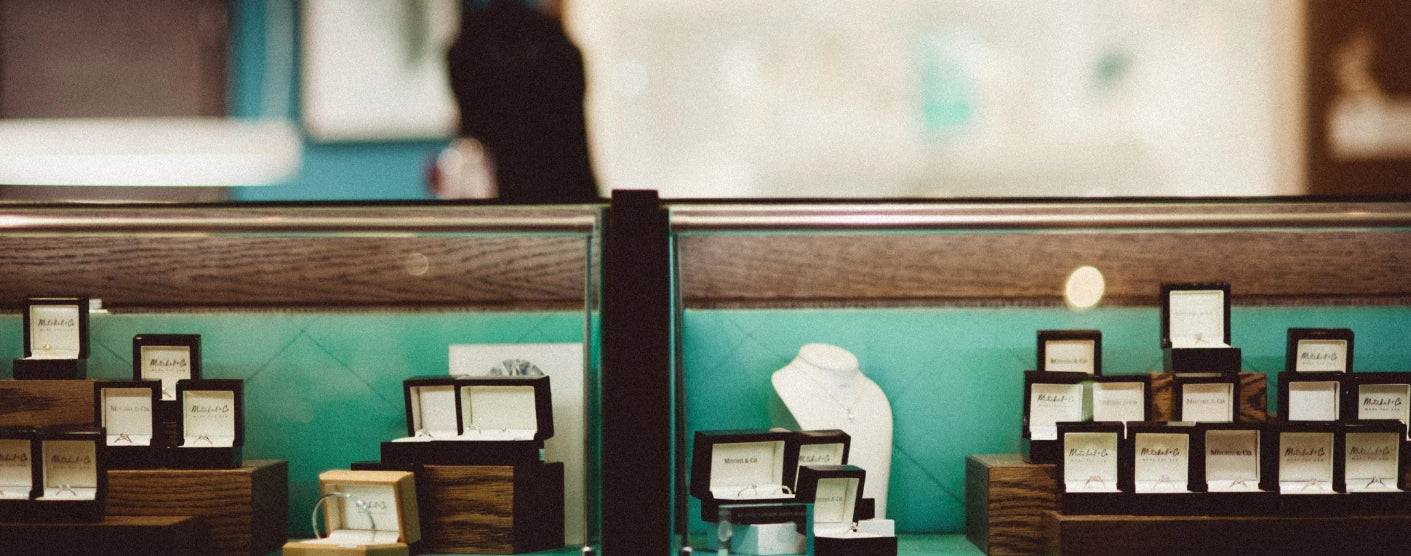How to Choose an Engagement Ring
When it comes to the major buying decisions you’ll make in your lifetime, choosing the right engagement ring is certainly one of the more important ones. Not only because it represents an exciting next step in your relationship with your significant other, but also because there are so many intricacies and minute details that can go into the decision making process.
From diamond cuts and ring materials, to certifications and setting styles - many people don’t actually know how much is involved in the process of deciding on and purchasing an engagement ring.
How much should you spend on an engagement ring?
The inescapable, first question you’ll have to ask yourself when purchasing an engagement ring is; what’s your budget?
You may have heard the old adage of “three months salary,” which originates from a 1930s marketing campaign run by De Beers Jewellers during the great depression. While outdated by today’s standards, many still place significant stock in this phrase. It’s certainly not a “rule” and there are some other things to consider beforehand.
Some of the main things you should consider when deciding on your budget are your current financial circumstances, what you and your partner value, and what kind of ring you are looking for. Is it a diamond engagement ring? A custom engagement ring? Or something unique in its own way? All of those answers are going to affect the price.
Bridebook’s 2023 research concluded that the average amount spent on an engagement ring in the UK is £2,158, but this is just a ballpark figure. In reality, many people spend significantly more, while others spend considerably less - it has no bearing on the amount that you should spend yourself. After all it’s the meaning and commitment that the ring represents that give engagement rings their true value.
Choosing the perfect style and design
Once you’ve got a rough estimate of your engagement ring’s price range , you can move onto deciding on the specifics of the ring itself. And here, we enter a whole new world of decision making.
Most jewellers agree that the best place to start is the setting.
What are the different engagement ring settings?
An engagement ring’s setting details all of the elements that go into the ring - except for the centre stone. This element not only securely holds the center stone but also defines the ring’s overall style, having an impact on the prongs, gallery, band, and any accent stones.
The setting not only affects the ring’s appearance but also its durability, maintenance, and how secure the stone is.
Whilst there are dozens of settings to choose from, some of the most popular settings include…
- Prong Setting - The Prong Setting or Solitaire Setting is a classic setting that uses four to six metal claws to hold the centre stone in place. It’s often thought of as the classic engagement ring design.
- Bezel Setting - The Bezel Setting is a more modern setting style that surrounds the gemstone with a thin metal rim. Because the stone is completely or partially enclosed, the Bezel Setting is especially secure and perfect for those with active lifestyles or those who prefer a minimalist aesthetic.
- Halo Setting - The Halo Setting is a glamorous style that sees the central stone surrounded by a ring of smaller stones to amplify the size and sparkle of the ring. This glamorous setting is favoured by those who want an eye-catching, luxurious ring.
- Pavé Setting - The Pavé Setting is similar to the Prong Setting, but features additional, small stones along the band of the engagement ring. Pavé Settings are a subtle way to add extra shine and brilliance to a ring without diverting attention from the central stone.
When choosing a setting, it’s important to think about your partner’s lifestyle. For example, if they lead a more active lifestyle, a lower-set or even flush-set stone may be preferable. Similarly, some settings may make resizing your engagement ring difficult, so it’s definitely a decision you should spend significant time on.
What are the different types of metals for engagement rings?
Similar to the setting, the metal you choose for your engagement ring has a major impact on the ring’s appearance and durability. Whilst many people default to yellow gold for that classic look, it’s important to consider other options. For example, if your partner already wears silver jewellery, a yellow gold ring might contrast too heavily and not “fit” with the rest of their jewellery collection.
The metal you choose will have a distinct impact on the weight, cost, and appearance of your engagement ring. Some of the most popular options include…
- Yellow Gold - Yellow Gold is typically thought of as the classic engagement ring material and is made by mixing pure gold with metals like zinc and copper. Yellow Gold earned its classic reputation due to its low maintenance and rich yellow hue, which makes it perfect for everyday wear.
- Platinum - Platinum is a premium metal choice renowned for its durability and high shine. Whilst typically the more expensive choice, platinum is the gold-standard of engagement ring metals, and many heirloom quality rings are made from the material. Plus, it’s hypoallergenic, which makes it perfect for individuals with sensitive skin and metal allergies.
- White Gold - White Gold is a classic and popular choice, and a less expensive alternative to platinum. White Gold is a gold alloy plated with Rhodium, which gives it its platinum-like appearance. However, White Gold rings typically require more maintenance and may fade over time.
- Rose Gold - Rose Gold is a romantic and distinct choice for an engagement ring. It features a blush-pink tone created by mixing gold with copper. Rose Gold engagement rings have become increasingly popular for their unique color and vintage charm. They’re also slightly more durable than yellow or white gold due to the strength of copper.
Deciding on a metal is a combination of aesthetic preference, budget constraints, and balancing upfront costs with maintenance costs. For example, a white gold ring may be less expensive than a platinum one, but may be more expensive to maintain in the long term.
If you’re worried about the durability of the ring, certain rings allow for the setting and band to be made from different materials, meaning you could have a white gold band and a platinum setting. Not only does this open up colour combinations with different metals, but allows you to strike a middle ground between affordability and durability.
Additionally, it’s important to consider the aesthetic combination of the metal and the stone together. If you opt for an alternative stone such as emerald or Sapphire, you’re opened up to a number of different colour combinations.
Which brings us onto…
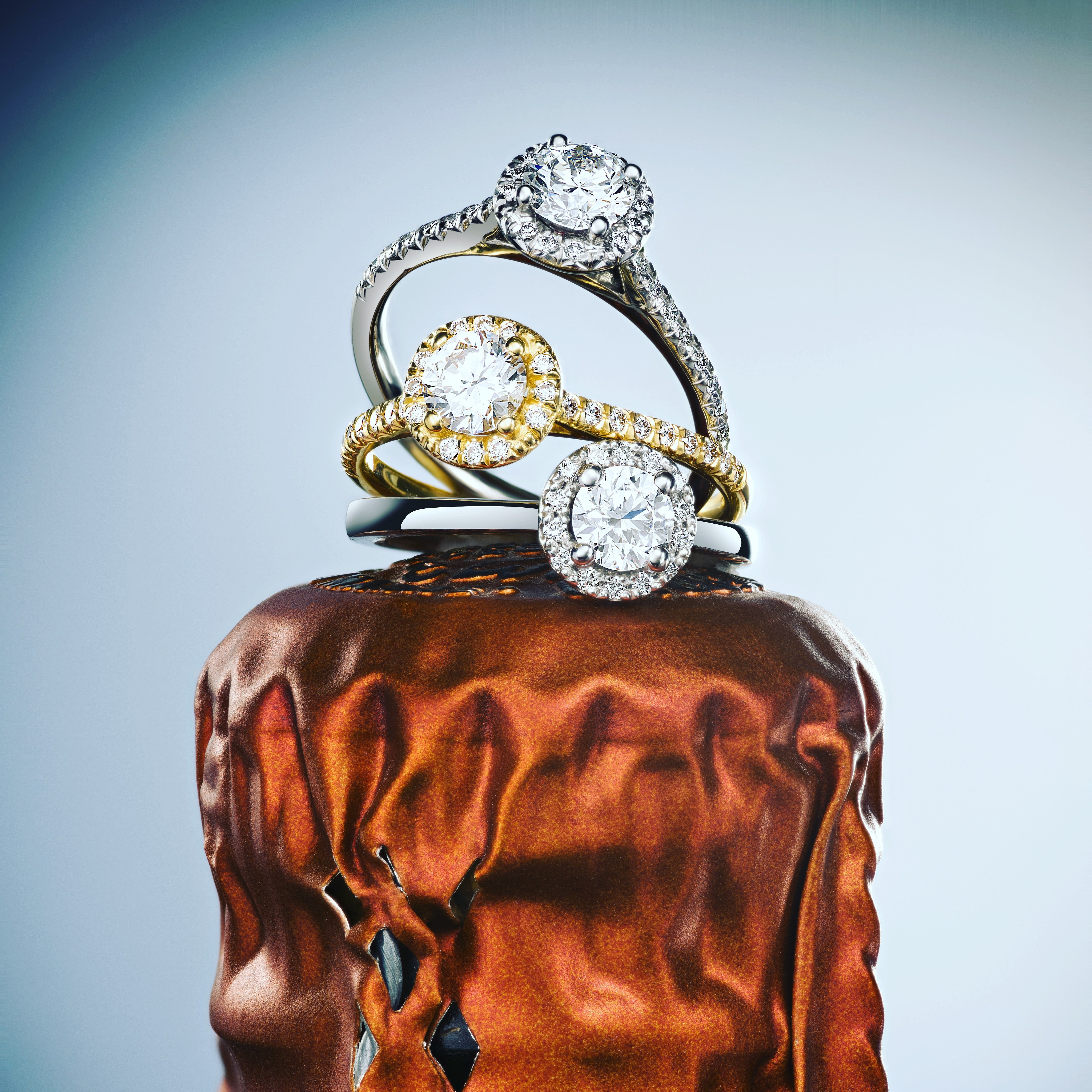
What stones are available for engagement rings?
When we think of an engagement ring’s stone, 9 times out of 10 we’re talking about the centre stone. The center stone is the focal point of nearly all engagement rings, and selecting one combines personal preferences and your priorities. Whilst the most common centre stone for an engagement ring is a classic diamond, that doesn’t mean diamonds are the only option.
Diamonds vs gemstones - Which is best?
Diamonds are historically the go-to choice for an engagement ring, and that status still rings true today. In fact, they're so renowned for their brilliance and durability that, outside of personal preference, you really can’t go wrong with a diamond engagement ring. Diamonds do come with their own set of considerations though, with the 4c’s of cut, colour, clarity, and carat all having an impact on the overall value and aesthetics of the diamond. If you’d like to learn more about choosing a diamond for your engagement ring - check out our diamond buyers guide.
For those open to exploring other stone options, gemstones have also become an increasingly popular choice for engagement rings due to the colours and unique textures they offer. In fact, when it comes to gemstones, customers aren’t just limited to your classic emeralds, sapphires, and rubies either - mossanite, morganite, aquamarine, and more have all found their place in modern engagement rings and offer different options for customers into an alternative look.
However, if you do opt for a gemstone, it’s important to check the specific properties, as some gemstones are significantly softer than diamonds - making them less durable options.
Natural vs lab-grown stones - Which is best?
The choice between natural and lab-grown diamonds and gemstones ultimately comes down to personal preference. Some are drawn to the unique formation process and historical significance of natural stones, while others appreciate the innovation and sustainability of lab-created alternatives.
Both types offer the same physical and chemical properties, making them visually and structurally indistinguishable. The main difference often lies in price, with lab-grown stones costing 30% less on average. This isn’t due to lower quality, but because lab-grown stones can be produced with greater efficiency. This gives buyers a wider range of choices to suit their values, style, and budget. But a quality cut is essential regardless of which option you’re going for.
Explore more in our diamond buyers guides:
What jewel shapes are available for engagement rings?
Beyond choosing the stone itself, it’s equally important to choose the shape of the central stone. The shape refers to the outline of the stone (not to be confused with "cut," which refers to how well the stone is faceted) - quite literally, the shape of the stone. You may assume that the shape has some bearing on the quality of the stone - but this is actually not the case and stones of any carat, cut, clarity, or colour can be made in a whole range of different shapes.
The most common and popular shapes are…
- Round - A Round-shaped stone is what most people think of when picturing an engagement ring. A Round-shaped stone is designed to maximise brilliance and shine and is perfect for those who want a classic look.
- Oval - An Oval-shaped stone offers a similar level of shine as a round stone, but with an elongated shape. Oval-shaped stones are known to make the fingers look slender and have become increasingly popular in recent years.
- Marquise - A Marquise-shaped stone is an elongated stone with pointed ends. They create the illusion of a larger stone and elongate the fingers. They’re renowned for the regal and vintage flair that they add to even the most modern rings.
- Pear - A Pear-shaped stone, sometimes called a Teardrop-shaped stone, combines the round and marquise stones - with one rounded side and one pointed side. Pear stones offer a unique shape and symbolise individuality.
- Cushion - A cushion-shaped stone, is a square shaped stone with rounded corners. Cushion-shaped stones offer a vintage look with a more mild shine, perfect for antique-style rings.
Some other popular shapes include Princess, Emerald, Asscher, Radiant, and Heart. And for those looking for something truly unique, celestial ring designs and tiara ring styles are becoming increasingly popular too. It’s important to note that a stone’s shape can affect the price of the ring, as well as how large it appears on the finger and the type of settings you’ll have available. For example, marquise or pear-shaped stones with pointed ends often require V-prongs to protect their delicate tips.
How to know what ring size to choose for an engagement ring?
Outside of the aesthetic decisions, the most impactful characteristic of your engagement ring is going to be the ring size. And so begins the covert operation to determine your partner’s ring size without them discovering that you’re planning on proposing in the near future.
If you are trying to keep it a surprise, some options include taking a ring that they already wear on their ring finger to a jeweller - we at Mitchel & Co offer a free ring size consultation and will be able to discern a ring size easily -or asking family and friends. However choosing a ring together is the most surefire option to getting the ring size correct.
Additionally, if you don’t get the ring size correct, there’s no need to panic. Depending on the setting you’ve chosen, it’s often very simple to get a ring resized to fit in a store.
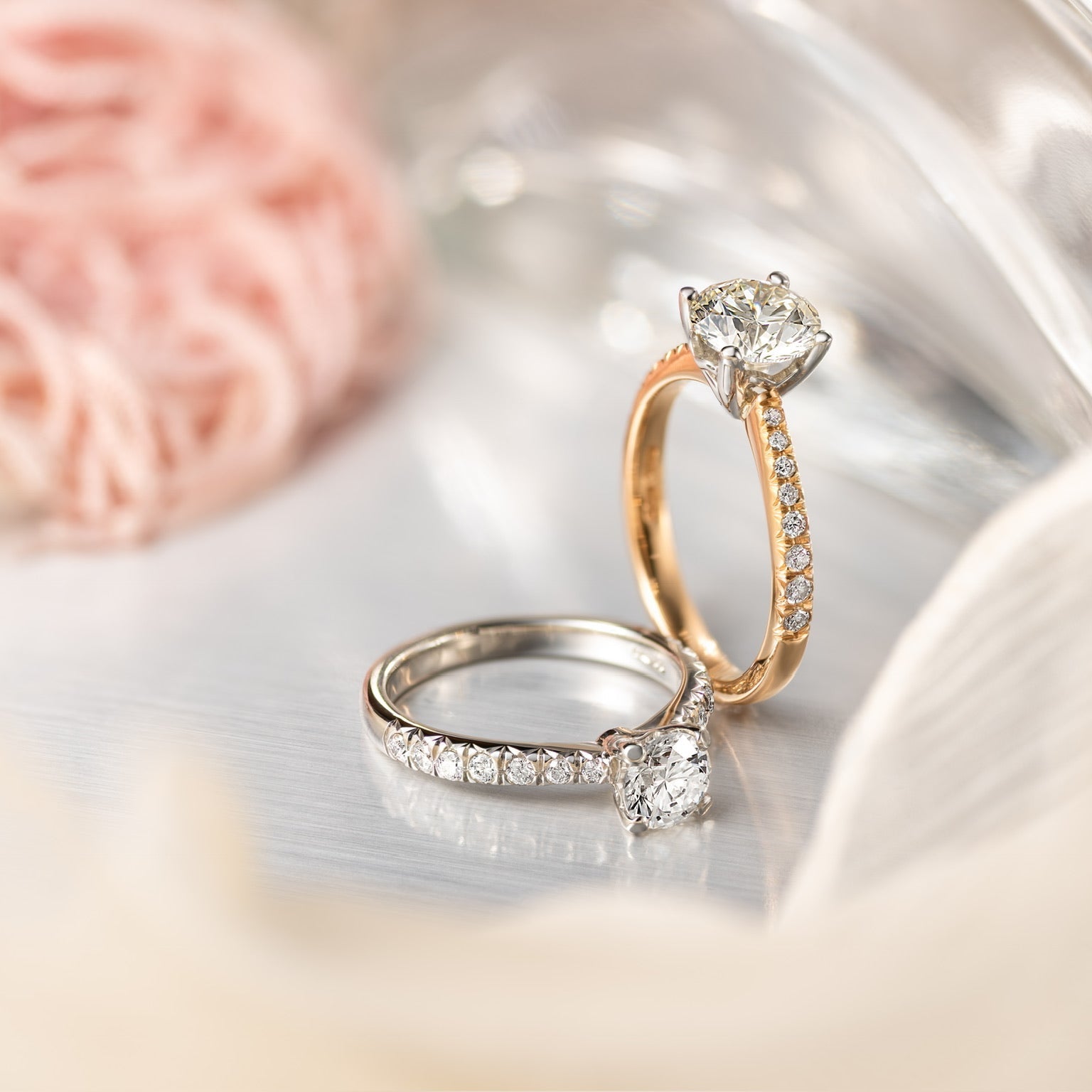
Five tips for buying an engagement ring
Engagement ring trends are useful places to start
Like interior design, fashion, or even other jewellery - trends in engagement rings come and go
Whilst an engagement ring trend may offer a great starting point or act as a source of inspiration, making sure your engagement ring is a true reflection of you and your partner’s relationship is paramount. If a trend really resonates with you or your partner, then by all means stick true to their tune, but if your ring is “off-trend” that doesn’t cheapen or make your ring any less valuable of a sentiment.
Think about how the ring will work with a wedding ring
Not all engagement ring and wedding band combos are directly linked to one-another. But, it’s not uncommon for jewelers to design matching sets, where the engagement, wedding, and eternity ring (a ring given to denote a relationship milestone such as 10th wedding anniversary) are designed to match. Whilst wedding rings are typically much more simple in design than their engagement ring counterparts, that doesn’t mean there’s no room for engravings or inlaid gems to be incorporated into the design so that there’s a more direct throughline between the engagement ring and wedding band.
Stone size is not the most important thing
Whilst there will always be a place for large, flashy rings, they just aren’t what some people are looking for. Unless your future spouse has made it abundantly clear that they value a large ring, think about diverting some of your budget into other elements of the ring such as stone carat, colour, band material, and band shape.
Consider working directly with a jeweler
Whilst there are a litany of different, pre-made rings for you to choose from at any high street or independent jewelers, engagement rings aren’t a one-size-fits-all type of product. It’s becoming increasingly common for those eager to get on one knee to work directly with a jeweller to develop a custom-made ring. Allowing them to decide everything from ring shape to setting, to some, a custom-made ring simply feels more special. We at Mitchel & Co, a Birmingham engagement ring specialist offer one-on-one consultations to help you put together the perfect custom engagement ring for your relationship.
Give yourself enough time
Whilst skilled jewellers like ourselves can work to create an engagement ring from scratch in a short time period, you as a customer should not make a decision lightly.
An engagement ring is not only a big purchase, but a considered one. This is not the type of purchase that should be made with little thought. Whilst you want your new fiance to be enamoured with their new ring, you also want to make sure it’s a decision you don't feel rushed into. Take your time before working with a jeweller to weigh your options and form a rough idea of what you’d like, before allowing the jeweller to take the reins and deliver an engagement ring worth cherishing.
Choosing an engagement ring.
Choosing an engagement ring is so much more than a financial or aesthetic decision. Whilst the amount of choices can make it seem overwhelming on the face of it, it’s a deeply personal journey that reflects your relationship and your shared future together with your partner.
From setting a budget and understanding the finer points of metals and gemstones, to navigating style preferences, trends, and the all-important ring size, there’s a lot to consider.
But don’t let the sheer number of choices overwhelm you. Instead, see the process for what it truly is: a meaningful opportunity to create something beautiful and lasting.
Above all, it’s important to trust your instincts, your taste, and your knowledge of your partner.
If you’re unsure where to start or simply want expert, personalised guidance, our team of master jewellers at Mitchel & Co. would be delighted to help. Whether you're designing a custom piece or exploring our curated collection, we're here to support you at every step of the way. Contact us today or visit us in our Birmingham Jewellery Quarter shop to begin your engagement ring journey.
Happy ring shopping.
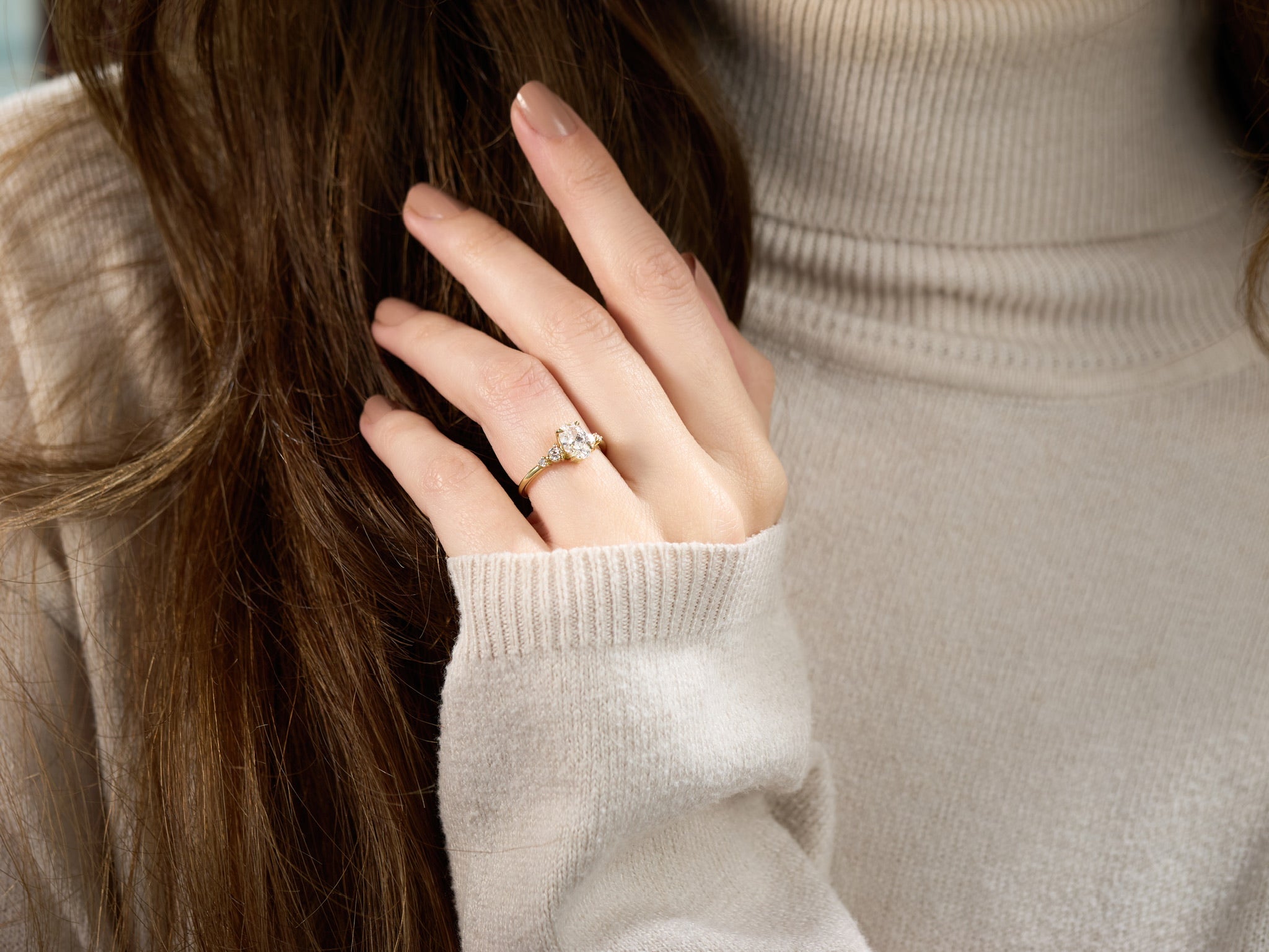
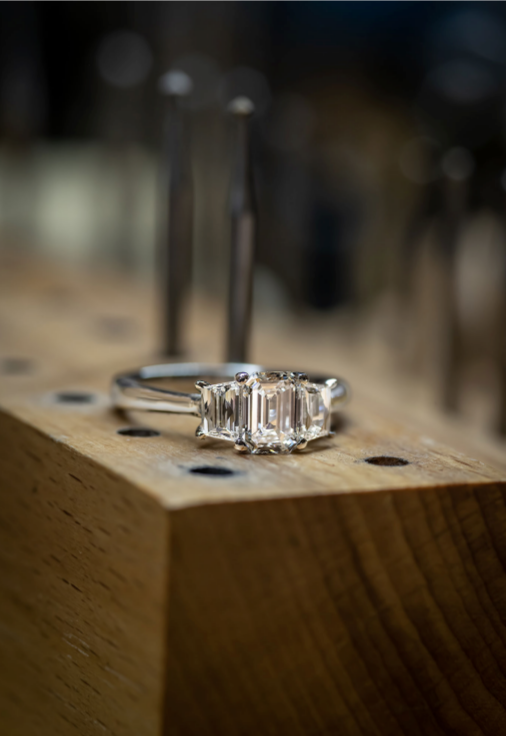
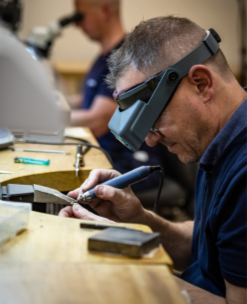
Tailored and made for you
Not seeing exactly what you want? We can design and craft a bespoke ring to your exact specifications, creating something absolutely unique to you.
Craft your perfect ring

